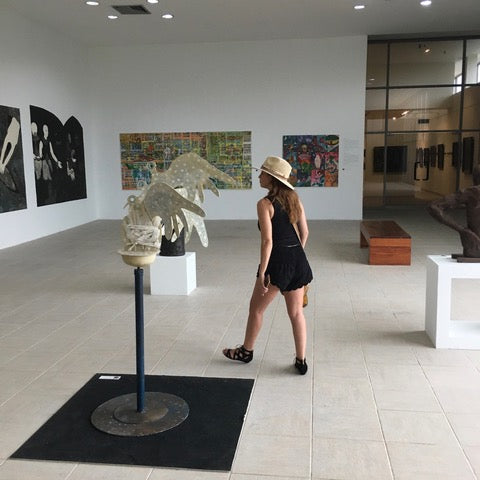
Some years ago, I came to a cross-road in my life. It had been nearly ten years since I had graduated with my B.S. in Journalism, and by that time, I’ve worked in diverse fields, gained experience in marketing, dance and physical fitness, administrative labor, and more. I felt it was time to dive into something, but wasn’t sure what that something was. I was in therapy at the time, and my therapist asked me a question, “What are you interested in?”
The answer had led me to pursue a doctoral degree in clinical psychology. On my first day of graduate school, our only female professor strutted into the room to begin our class. I remember she was wearing some fabulous Louboutin boots. ‘That’s not what a therapist looks like,’ I thought to myself. She then described her relationship to two of the most well-known psychoanalytic theorists in history. “Freud is my husband and Jung is my lover,” she declared as she sauntered across the room. I hadn’t read much by either at that point, but I was intrigued by the way that she thought about psychology and psychoanalysis beyond the classroom and clinical office. In keeping with her out-of-the-office thinking, our first assignment was to attend an art exhibition in Beverly Hills. What? I was already in graduate school, had enough homework to do, and I had barely said ‘Hi’ to my new classmates. “Psychoanalysis is everywhere,” she said. I wasn’t sure what she meant.
Nevertheless, members of my cohort and I begrudgingly found our way a couple of nights later to the opening of Relative Relations by Jane McAdam Freud, the daughter of world renowned and soon-to-be deceased artist Lucian Freud, who was the grandson of the most famous Freud of all, Sigmund.


Fast forward seven years later and I am now a licensed psychologist, in training to become a psychoanalyst. Becoming Freud (ish), if you will.
I’ve since then whole-heartedly found that professor’s viewpoint to be true and beautiful and enticing. I’ve been thinking of- and experiencing ways in which themes of psychology, in general, and psychoanalysis, in particular, manifest in our daily lives. Very much outside of the couch, as Prof. Louboutin had promised.
For example, I used to be, quite honestly, intimidated by art. So much history, so many periods, artists; how could I possibly get them all right? At some point, I gave up trying. Then, I realized that the intimidation was rooted in my way of being in general—I had such high standards where I had to know a lot about something to be able to sit with it and appreciate it. I realized that I didn’t have to do that with art (or in life, for that matter). I could be inspired and enlivened by Botero’s La Danse (2005) or Klimt’s Death and Life (1915) without knowing the history of Colombia or the intricacies of Austrian symbolism. I could look at the former and remember how my parents danced, or didn’t dance, and at the latter, and come in touch with the parts of me that are dying.
In this way, art, fashion and current culture provide a delightful opening to understanding our internal experience. Art offers us the opportunity to connect to our inner world. The thoughts, associations, and feelings we have looking at- or experiencing any specific piece are unique and subjective based on personal experience. We can associate to our mother’s childhood summer home while looking at Van Gogh’s Yellow House (1888) or be reminded of our first heartbreak while picking out a dress at Free People. If we let it, that moment could be joyful, healing, curious, confusing, painful, or liberating.
That is to say, that moment could manifest what Freud had encouraged us to do in a paper dated 118 years ago: look at the piece subjectively. Actually, that paper—Leonardo da Vinci and a memory of his childhood—presented a far more compelling idea and constituted a landmark in illuminating the psychological dimensions of art. Despite the then-immature development of psychoanalysis in 1910, Freud introduced the novel perspective of un-conscious influence and meaning to the traditional perspectives for understanding art (e.g., historical, social, cultural, religious, stylistic; patron, project, and public). Specifically, the paper contemplated on the elusive nature of aesthetics, the conscious and unconscious gratifications derived from art, the subjective response of the viewer, the transference of the artist and of the viewer, and the idea of “beauty in the eye of the beholder.” In other words, it presented an entirely new approach to art, the psychology of the artist, the relationship of life and art, the creative process and product, the medium and the message. (Blum, 2001)
As Dr. Freud and Dr. Louboutin said, each in their own way, psychoanalysis is everywhere. Take yourself to the King Tut exhibit, or go to Westfield to feast your eyes at Tiffany’s, Tory Burch, or Oak+Fort. You may find that as you are beholding the artist’s subjective experience or the designer’s sense of aesthetics, you will discover something important about your unique psychology. You just have to be willing to look.
Find out more about Dr. Aimee Martinez, PsyD below and follow her on Instagram for thoughts and advice!
References
Blum, H. (2001) Psychoanalysis and Art, Freud and Leonardo. Journal of the American Psychoanalytic Association. Volume: 49 issue: 1409-1425
